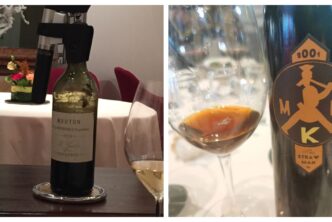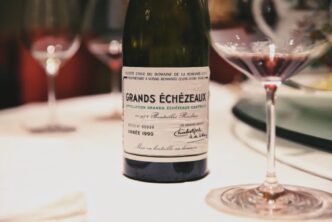Vieux Château Saint-André 2002 Vieux Château Saint-André Montagne Saint-Émilion 91
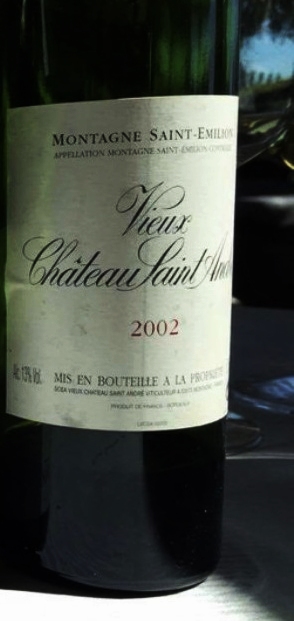
In 1978, Jean-Claude Berrouet, long-time director of Etablissements Jean-Pierre Moueix (where he was responsible for 43 vintages of Petrus, along with many other great wines including Trotanoy, Hosanna, La Fleur-Petrus, Magdelaine and Dominus in California) bought eleven hectares of vines in the Saint-Émilion Satellite appellation of Montagne Saint-Émilion. At the time the move might have been deemed curious because the area wasn’t all that famous, but as Berrouet had built up a lot of experience buying grapes all over Bordeaux for the firm’s then important bulk wine business, and he had come to be impressed by the quality of grapes and wines of Montagne Saint-Émilion (the family also owns Château Samion in Lalande-de-Pomerol, and both properties are now run by Jean-Claude’s eldest son Jean-François, called Jeff by everyone since forever). One of the key points about Vieux Château Saint-André is the beauty of its terroir, especially the soil, cool clay over limestone patches which allows Berrouet to make vibrant wines that are deep and refined and never over the top (in fact the cool soil means that grapes are always picked a week to ten days later -on average- at Vieux Château Saint-André compared to Château Samion). Jeff follows the winemaking teaching wisdom of his father so the wines are made without excesses or set recipes but based on vintage characteristics (no malo-lactic in barrel, number of rackings that vary depending on the year: sometimes one, sometimes three).
The 2002 Vieux Château Saint-André Montagne Saint-Émilion is a lovely wine that is drinking beautifully, one that punches way above its vintage class (cold and rainy, 2002 was admittedly a difficult, if not downright miserable, year in Bordeaux wine). Bright ruby with a pale touch of garnet at the rim. Violet and cassis on the pretty, very refined nose. Then similarly pretty in the mouth, with juicy, sappy flavours similar to the aromas nicely framed by well-integrated acidity. The long suave and mineral-accented finish features an intriguing hint of mint. The lively but harmonious acidity confers noteworthy freshness to the wine, which you might say is a family characteristic of all the Berrouet wines. In this, the cool clay over limestone soils of this specific part of Montagne Saint-Émilion (where Vieux Châteaux Saint-André’s vines are located) certainly helps. This is a very refined yet flavorful 87% Merlot and 13% Cabernet Franc blend, about 15% of which was aged in new oak that is best drunk up over the next few years for maximum enjoyment, before it begins its spiral descent. An extremely successful wine considering the difficulties posed by the rainy and cool growing season (officially Jeff Berrouet’s “first” time at the helm), leaf clearing was essential to ward off the risks posed by humidity. Also, Berrouet chose not to work the soil much that year so as to have the excess water just run off rather than risk it penetrating downwards and potentially bloating the grapes and diluting the finished wine. Drinking window: now-2025.
Karthäuserhof 2019 Karthäuserhofberg Riesling Spätlese Ruwer 92
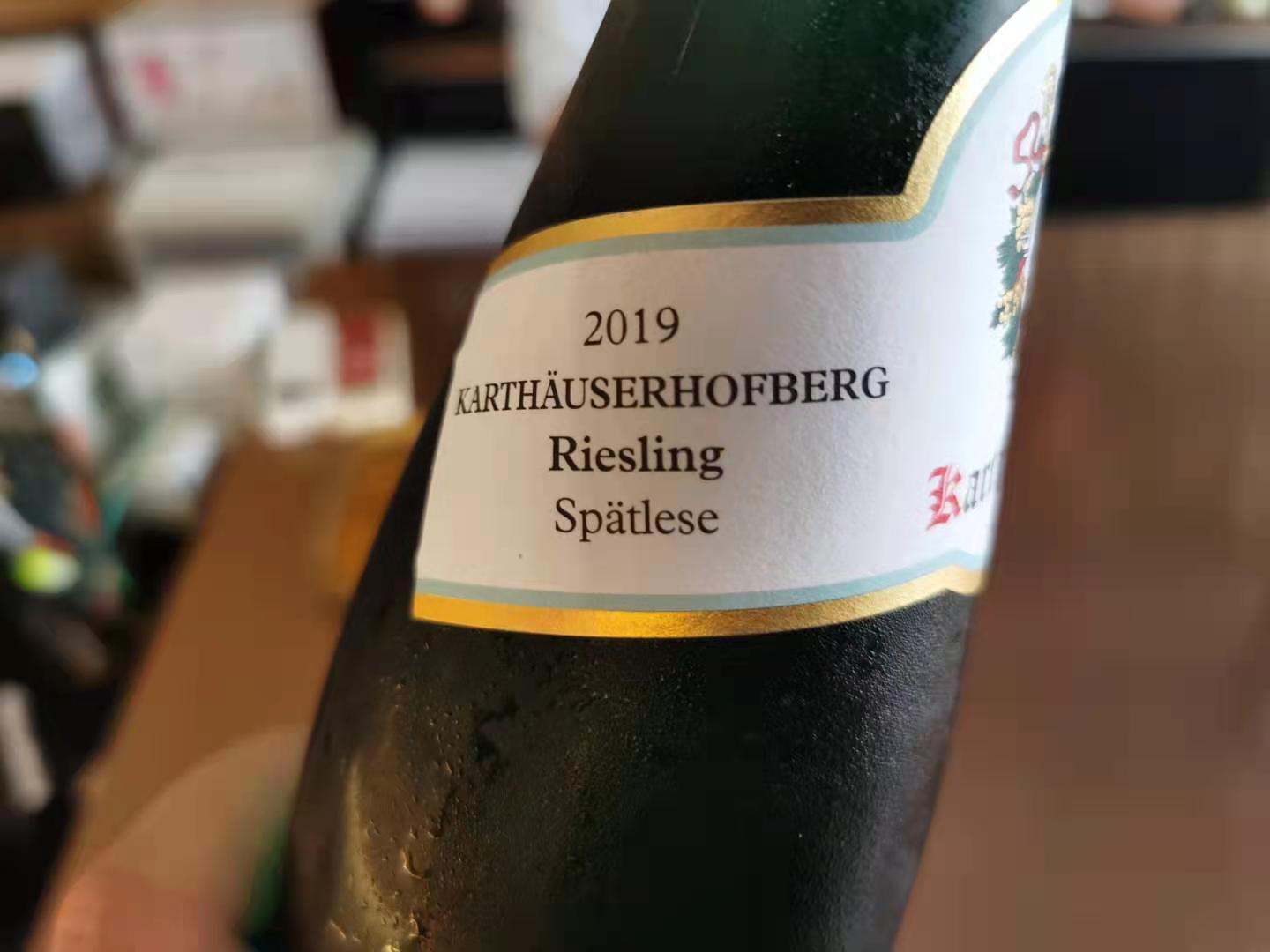
In the eleventh century, Bruno of Cologne founded the Carthusian order (and given that he was canonized in 1514, he is therefore also known as Saint Bruno the Carthusian), and built a monastery at Chartreuse near Grenoble in France. Later, at the beginning of the fourteenth century, the order founded the Karthause ad St. Albanum monastery in Trier, and in 1335 the monks were given an estate in the village of Eitelsbach, the ancestor of today’s Karthäuserhof (which translates to “farm of the Carthusians”). The estate has since developed into a modern-day winery that makes remarkably pure wines. Generally associated with the Mosel production area of Germany, it is actually located in the unforgettably beautiful valley of the Ruwer river (a small tributary of the Mosel river) in the municipality of Trier-Eitelsbach (the full name of the vineyard would be Eitelsbacher Karthäuserhofberg: in fact, the Karthäuserhofberg is the result of having united five original vineyards: the Burgberg, Kronenberg, Orthsberg, Sang and Stirn).
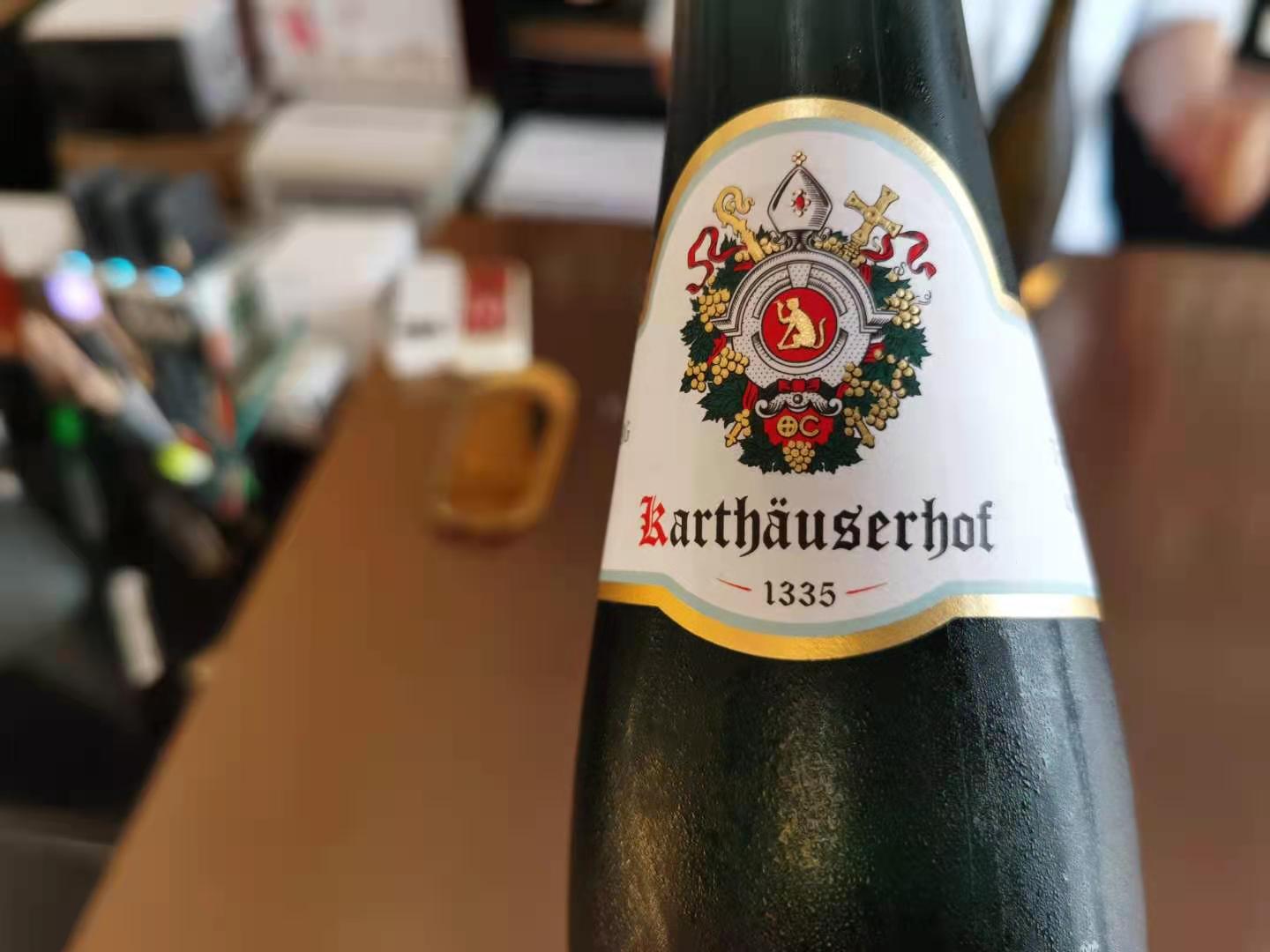
Amazingly, the Karthäuserhofberg winery has been in the same family for some two-hundred-old years (and this after having been run by the priests for over five centuries), and is reportedly the world’s eight oldest winegrowing estate. And as if that, and making great wines, wasn’t already enough, it is also characterized by one of the most distinctive bottles in all of winedom, for there’s no “normal” label as such, save for a small neck collar where you find all the relevant info (introduced at the end of the 19th century by then owner Karl Wilhelm Rautenstrauch). The estate is run today by Albert Behler (who took over from Christoph Tyrrel), with the help of Head Winemaker Sascha Dannhauser who for twenty years worked alongside Ludwig Breiling, the legendary Karthäuserhofberg winemaker who headed the team responsible for many of the wines that made the estate’s modern-day reputation (basically anything from the 1990s onwards, with only a few blips along the way, a more or less normal happening given that a similar run of excellence is usually unsustainable indefinitely).
The estate’s nineteen hectares are planted to 93% Riesling and 7% Weissburgunder (a cultivar better known by its Italian and French names, Pinot Bianco and Pinot Blanc, respectively: the presence of the Weissburgunder dates back to Valentin Leonardy, the estate’s first owner after the secularization brought on by Napoleon). In any case, the estate has long been admired for its ability in producing not just the typical wines of Germany (the famous and classic Prädikat wines) characterized by pure fruit, racy acidities and hints of residual sugar, but also drier-styled (trocken) wines that are increasingly popular today (but that are, in my opinion, rarely if ever the country’s best wines). And differently from many modern German wine estates that have become the darlings of a certain type of press always quick to jump on the latest fad, the Karthäuserhof wines aren’t (for the most part) left sitting on the lees so that they taste of practically nothing but grass and dried herbs (something which totally defeats the purpose of great Riesling wines: it’s no accident that the truly great wine estates of Germany, such as Egon Muller and Joh. Jos. (JJ) Prum, do not make wines that will have you thinking you’ve turned into a cow when you drink them). And while the estate did begin making a dry grosses gewächs.
Wine with the 2009 vintage, it is fair to say, with all due respect, that this wine is not the Karthäuserhof’s finest hour. Viticulture at Karthäuserhof is respectful of the environment, as the estate uses no pesticides opting instead for pheromones (these interfere with insect pest reproduction) and wines are mostly made by stainless steel fermentation. In order to make the sweeter level wines, fermentation is arrested by cooling the tanks and the sugar-acid balance achieved by blending between tanks. The result is lively, crisp and elegant wines that speak of the Ruwer.
Nowhere is this more evident than in the lovely Karthäuserhof 2019 Karthäuserhofberg Riesling Spätlese Ruwer. Bright golden-tinged straw yellow, the nose offers aromas of yellow peach, candied apples, honeysuckle, mint, and crushed stones. Vibrant and juicy, with at once soft yet lively flavours of ripe pear, green apple, yellow peach, and sweet spices, nicely complemented by a perfumed note of lime and jasmine. Closes long, leaving a fresh mouth-watering feeling of lightness. Still very young and plump, it needs time to develop greater nuance and refinement, although it’s undoubtedly irresistible already now. But as it’s not going anywhere anytime soon, no rush to drink it up, and I actually encourage you to cellar this away for another six or seven years at least. A truly lovely Spätlese that is not especially sweet thanks to its lifted acidity (though it’s clearly not a classically dry wine). Drinking window: 2027-2040.

 English
English
